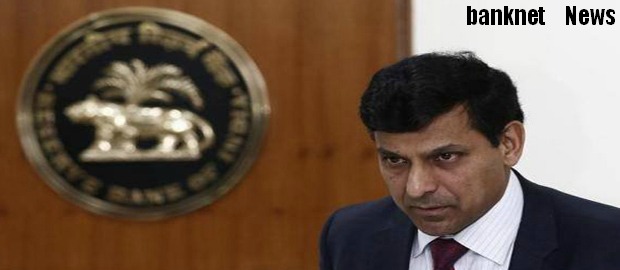

First Bi-monthly Monetary Policy Statement for 2015-16 By Dr. Raghuram G. Rajan, Governor, RBI - April 07, 2015 - Full Text
Assessment
Since 2014-15’s sixth bi-monthly monetary policy statement of February, a moderate and uneven global recovery is emerging, with economies being buffeted (or supported) by currency fluctuations and commodity prices. Growth in the United States is likely to have been weak in the first quarter of calendar 2015, partly because of US dollar appreciation, but is expected to strengthen. The Euro area has started to show modest improvement, supported by a boost to demand from lower crude prices and the depreciation of the euro as well as easing financial and credit conditions following the commencement of quantitative easing. With the waning of the impact of the consumption tax increase, growth turned positive in Japan in Q4 of 2014 and consumer confidence and exports picked up. However, retail sales and industrial production contracted, indicating that the outlook is still weak. Growth continues to slow in China amidst financial fragilities and macroeconomic imbalances. This will have regional and global ramifications, although the softness in international commodity prices is providing some offset for net importers while adversely impacting net exporters. Global growth is likely to firm up through 2015 and 2016, supported by stronger recovery in the advanced economies (AEs) and soft energy prices. Downside risks mainly emanate from the slowdown in China, geopolitical risks surrounding oil prices and the uneven effects of currency and commodity price movements.
Global financial markets have been boosted by expectations of normalisation of US monetary policy being pushed back into late 2015, monetary policy stances turning highly accommodative in other AEs, and several emerging market economies (EMEs) easing policy rates to address growth concerns. Long-term yields have declined to all-time lows on weak inflation expectations, compression of term premiums and the safe haven allure of US Treasuries. Ultra low interest rates and reduction in risk premia have raised most asset prices to record highs, and have pushed investors to riskier assets such as equity and lower rated debt instruments. Exchange rates have experienced large and volatile movements, with the US dollar strengthening against most currencies. Among EMEs, markets have tended to discriminate against those with relatively weaker fundamentals and/or oil exporters. Nevertheless, with high portfolio flows to EMEs, risks from sudden shifts in market sentiment have increased.
Domestic economic activity is likely to have strengthened in Q4. Second advance estimates of the Ministry of Agriculture suggest that the contraction in food grains production in 2014-15 may turn out to be less than earlier anticipated. However, the adverse impact of unseasonal rains and hailstorms in March is still unfolding. Initial estimates indicate that as much as 17 per cent of the sown area under the rabi crop may have been affected though the precise extent of the damage remains to be determined. The growth in allied activities is likely to remain strong as in the recent past, though it remains to be seen whether it will fully compensate the decline in food grains output.
The industrial sector, and in particular, manufacturing appears to be regaining momentum, with the growth of production in positive territory for three consecutive months till January. While basic goods production has been expanding steadily since November 2013, capital goods output has been relatively lumpy and volatile, and more positive readings are needed to be confident about a durable pick-up in investment demand. The persisting contraction in consumer durables production for over two years could be reflecting the underlying weakness in consumption demand as well as higher imports.
Mixed signals are coming from the service sector. While the national accounts statistics seem to suggest that consumption demand for services is robust relative to the demand for goods, and purchasing managers perceive activity expanding on new orders, various coincident indicators of services sector activity including railway and port traffic, domestic and international passenger traffic, international freight traffic, tourist arrivals, motorcycle and tractor sales as well as bank credit and deposit growth remain subdued.
Retail inflation measured by the year-on-year changes in the revised consumer price index (CPI) firmed up for the third successive month in February as favourable base effects dissipated, despite the price index remaining virtually flat since December. The still elevated levels of prices of protein-rich items such as pulses, meat, fish and milk kept food inflation from following the seasonal decline in prices of vegetables and fruits. The prices of items such as sugar and edible oil moderated in consonance with the downturn in global commodity prices. Fuel inflation edged up for the second month in a row due to the increase in prices of electricity and firewood.
Inflation excluding food and fuel fell successively in the nine months till February. A large part of this disinflation has been on account of the slump in international crude oil prices feeding through into domestic prices of petrol and diesel that are included under the category transport and communication. Inflation in respect of housing has also eased in the revised CPI, in part reflecting methodological and coverage improvements. Furthermore, upside pressures affecting prices of services such as education, health and other services have also fallen on account of weak demand conditions. The rate of growth of rural wages has come off substantially from the double digit levels that prevailed up to November 2013. Firms are also reporting a substantial easing of input price pressures, barring the most recent purchasing manager surveys. Reflecting past disinflation, inflation expectations of households are in single digits, although they too exhibit some firming up in Q4 in response to the turning up of food and fuel inflation during January-February.
Since the shift in the monetary policy stance in January towards accommodation, the Reserve Bank has moved to ensure comfortable liquidity conditions through pro-active liquidity management, including fine-tuning operations on week days and access to the MSF and fixed rate reverse repo on Saturdays. This has helped to smooth the liquidity frictions that characterise events such as advance tax payments and balance sheet dates, keeping the money market rates anchored to the repo rate. In order to alleviate the pressures that build up in March on account of frictional factors, the Reserve Bank augmented its liquidity management instruments by engaging in repos of maturities ranging from 8 to 28 days cumulating to an outstanding amount of Rs 1430 billion (including support from the MSF of Rs 416 billion) at end-March in addition to regular 14-day term repo auctions and fixed rate overnight repos. The availability of liquidity can be gauged from the fact that in March, average daily liquidity returned by market participations through variable/fixed rate reverse repos amounted to Rs 293 billion.
Export performance has been progressively weakening and contraction set in on both non-oil and petroleum product exports since December 2014. Fragile external demand conditions and the softness in international commodity prices have taken a heavy toll, as in several other EMEs in Asia. In particular, price realisations have been eroded, despite export volumes going up. With the Indian rupee gaining in real effective terms, export margins are coming under pressure for those exporters without substantial imported inputs. Net terms of trade gains and compression in imports of petroleum products have narrowed the trade deficit in the last three months to its lowest level since 2009-10. Gold imports remained contained; although non-oil non-gold imports grew at a modest pace in these months, they may be reflecting substitution effects in view of the sluggishness in domestic manufacturing.
Exports of services, particularly, software and travel have provided a silver lining and have helped to hold down the current account deficit (CAD) which has narrowed in Q3. This improvement has likely extended into Q4. As a result, capital inflows – mainly portfolio flows into domestic debt and equity markets and foreign direct investment – have exceeded the external financing requirement and enabled accretion to the foreign exchange reserves which reached an all-time peak of US$ 343 billion as on April 3, 2015. These reserves, including forward purchases that will be delivered over the next few months, provide some buffer against potential capital outflows when monetary policy normalisation in AEs commences. Good macroeconomic policy will, of course, be the critical first line of defence in retaining investor confidence.
Assessment ... Read more
Policy Stance and Rationale ... Read more
Banking Structure... Read more
Financial Markets ... Read more
Access to Finance... Read more
RBI Monetary and Credit Policies (1999-2015) - Notifications, Press Releases, Reports - Click here

BANKING

FINANCE

INSURANCE

TECHNOLOGY

Foreign Exchange


